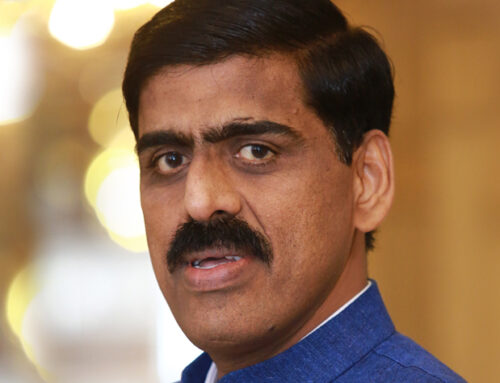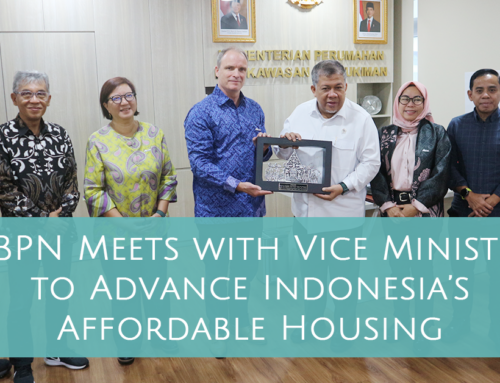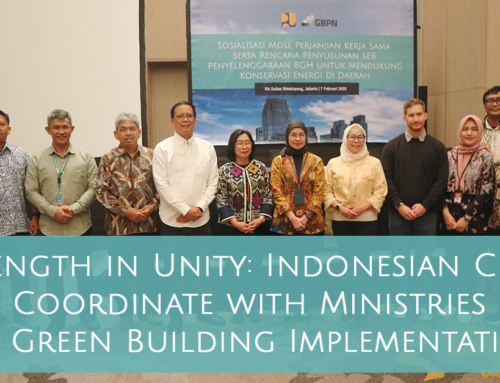Dr Poppy Ismalina is on a mission to find innovative finance mechanisms to incentivize green buildings
In 1993, as a student of economics, Dr Poppy Ismalina realised that there was little understanding of how economic growth put a heavy burden on the environmental quality of the country. Cut to 2023, and Dr Ismalina is working on green finance mechanisms. Dr Ismalina says that the journey has been an educational experience in itself.
“The classical economic theory says that the main objective of economic development is a country’s economic growth. But we didn’t realise that the cost of economic growth was bad environmental quality,” Dr Ismalina said.
“From the time I was an undergraduate in economics, I have been interested in environmental economic issues. My undergraduate thesis was titled ‘Impact of Economic Development on Environmental Quality in Indonesia’. I decided at that time that I’ll dedicate my career to making a really good relationship between economic activities and environmental quality.”
Dr Poppy Ismalina went on to complete her PhD in economics from the University of Groningen and is an associate professor at the University of Gadjah Mada, Indonesia.
“In my classes, I stress the importance of environmental quality. So when they graduate and take up careers, they will know that there is a risk involved in ignoring environmental quality while pursuing economic growth.”
Dr Ismalina has led and supervised several projects on Sustainable – Climate Finance, Public Policies in Climate Change Issues, Financing Scheme for Green Projects, and COVID-19 Green Recovery. She has also published scholarly papers on green finance in Indonesia and low carbon sustainable development; and worked with International Finance Corporation (IFC) and World Bank on sustainable finance.
From Environmental Economics to Green Finance
So how did Dr Poppy Ismalina get into the green financing sector? In 2015, the Financial Services Authority of Indonesia, Otoritas Jasa Keuangan (OJK) brought her on board to work on the Roadmap for Sustainable Finance.
Over the next few years, Dr Ismalina worked with banks, capital market players, non-banking financial institutions and other financial sector players in Indonesia to give them technical assistance and capacity building programs to implement sustainable finance. She notes that lack of awareness was one of the main challenges in financing green economic activities
“Even high level management were not very clear on how to define green buildings, green industrial activity or green small-medium enterprises. They were not familiar with green economic activities. This directly led to lack of innovative finance for green economic activities and green buildings.”
“Green and sustainable economic development was seen as high cost, and the financial sector was concerned about non-performing assets with green financing schemes.”
“The Government of Indonesia has regulations to reduce pollution and carbon emissions. But on the other hand the financial sector didn’t have a clear understanding of these issues.”
Dr Ismalina says that her work is all about finding feasible and effective ways to finance green economic activities. “Though the initial investment cost may be higher for sustainable projects, the long-term costs are lower than non-sustainable practices. The impact needs to be seen from a long-term perspective.”
I’ve been working on finding the most effective financing mechanisms that will help share the cost burden for the government and financial sector, especially the banks. That’s my mission.”
Green Buildings are important for energy-efficiency. It is not just about big industrial buildings, but it’s also about how households can apply green building policies to their homes in a cost-effective manner. “How can the government and financial sector support residents’ willingness to apply green building concepts in their homes. That is what motivated me to be involved with GBPN. I was now getting a chance to make a difference not just for big industries, but for homes to make them more sustainable and healthy.”
Global Best Practices, Local Approach
Since March 2022, Dr Ismalina and GBPN have been working closely to provide the Ministry of Finance, climate finance and fiscal policy expertise to tackle barriers in sustainable development in Indonesia.
“The best part of working with GBPN was that I got the freedom to identify and define the key activities that would make this project successful. This helps me bring so much more to the table. We then had discussions with the Ministry of Finance to understand how feasible our proposal was.
GBPN has a very collaborative approach to its projects, which is necessary for the success of any project.”
Dr Ismalina is leading the research activities with a focus on barriers, innovation and government support for financing schemes for sustainable buildings.
As part of the research project, she has studied the green building best practices of other developing countries that share characteristics with Indonesia.
“Best practices from similar countries is the best way to convince decision makers at the national, provincial and city levels, that this is feasible because others have successfully implemented this.”
Finance sector cannot stand alone in green financing mechanisms
Dr Ismalina’s second objective is identifying potential fiscal and non-fiscal incentives for green buildings – incentives that need to come from the government, shared between government and financial sector, and from the financial sector. “Government incentives or the financial sector alone will not be effective in promoting adoption of green buildings.”
“The government, private sector, financial sector, international organisations and donors must work together to finance and improve the adoption of green buildings in Indonesia.”
The research outcomes will be presented at a knowledge dissemination event in 2023.
Dr Ismalina is also involved in developing a feasibility study of the proposed incentives. The pilot study is being carried out in Bali where GBPN has an ongoing engagement with the government on green buildings.
“I’m optimistic that in one or two years, provincial governments like Bali can implement these incentives at the provincial as well as district level to stimulate the adoption of green buildings.”
“Since 2015 when I was contacted by OJK, I’ve witnessed the Indonesian Government’s commitment to sustainable development increase significantly. In our consultations with stakeholders for the green building research activities, I’ve seen that they are very ambitious. They were very enthusiastic in providing comments and insights on our proposed mechanisms.
I would say that the final outcome of the finance incentives research project is a sum of our studies and stakeholder inputs, because they were so enthusiastic to support us to implement or to apply what we propose in that study.”
According to Dr Ismalina, the next step is to get more provinces to pilot the proposed mechanisms. We need more pilot projects at the provincial as well as city levels to implement the proposed green finance incentives. That is how we can show proof that the incentives work. Pilot projects also give us a chance to localise mechanisms for effective outcomes.
Dr Ismalina signs off, “There is a lot more awareness and enthusiasm for green buildings now. We just need to pick up the speed.”
Share This Story, Choose Your Platform!
Stay in touch with how we’re transforming the buildings sector
GBPN runs innovative building policy reform programs in key regions around the world that aim to tackle the climate emergency by decarbonising the buildings sector. Stay up to date with our newsletter.
Stay in touch with how we’re transforming the buildings sector
GBPN runs innovative building policy reform programs in key regions around the world that aim to tackle the climate emergency by decarbonising the buildings sector. Stay up to date with our newsletter.







